A Note on Performance
We typically use these for fairly simple networking either with flat networks or using some VLANs but without routing. Since our typical network usage is small file transfers when we are doing things like loading ISOs via IPMI or running management tasks. If you need highly specialized networking or the lowest latency switch, you probably are not looking at the $189 price bracket. For its intended use, it is fine. Here are the official switching results from MikroTik:
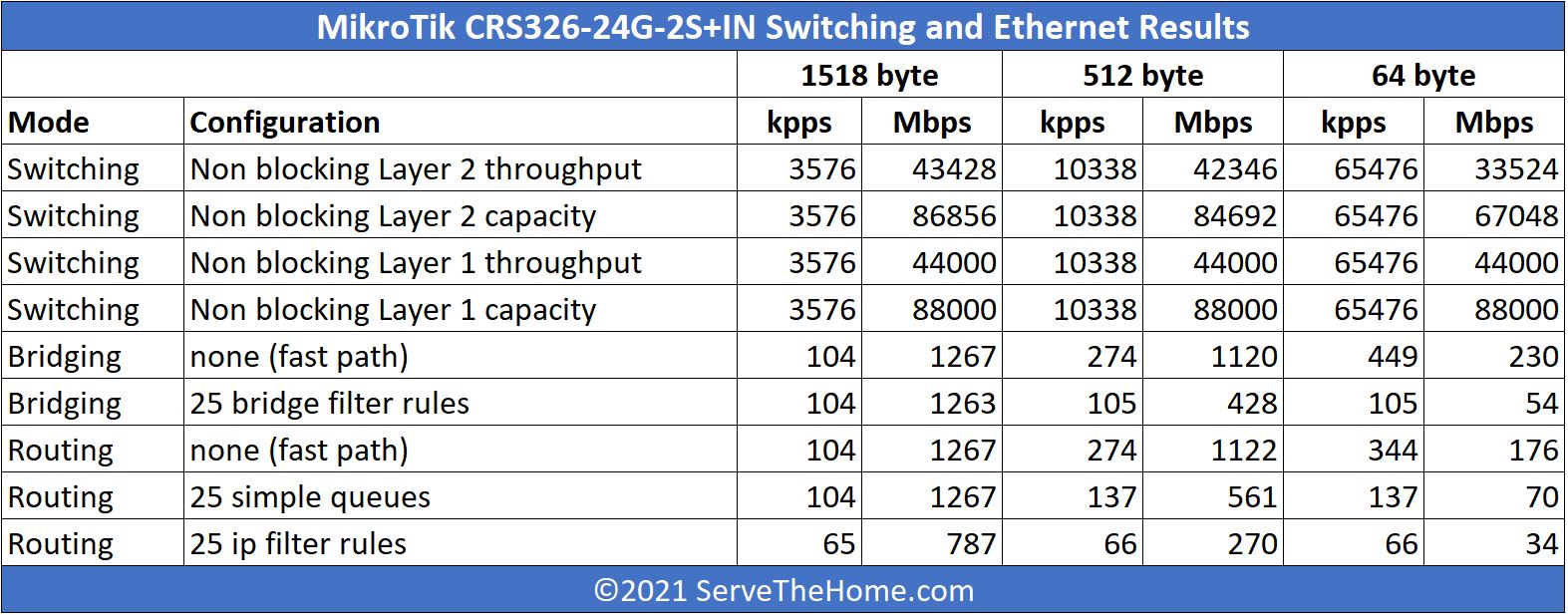
Since for our low-end switch testing we focus on fairly basic L2 switching, we instead wanted to show a stark contrast in performance on the bridging and routing performance using MikroTik’s data for the previous model versus the newer model. Here is what the delta looks like in terms of packets per second between the CRS226 (older model) and this CRS326 (newer model):
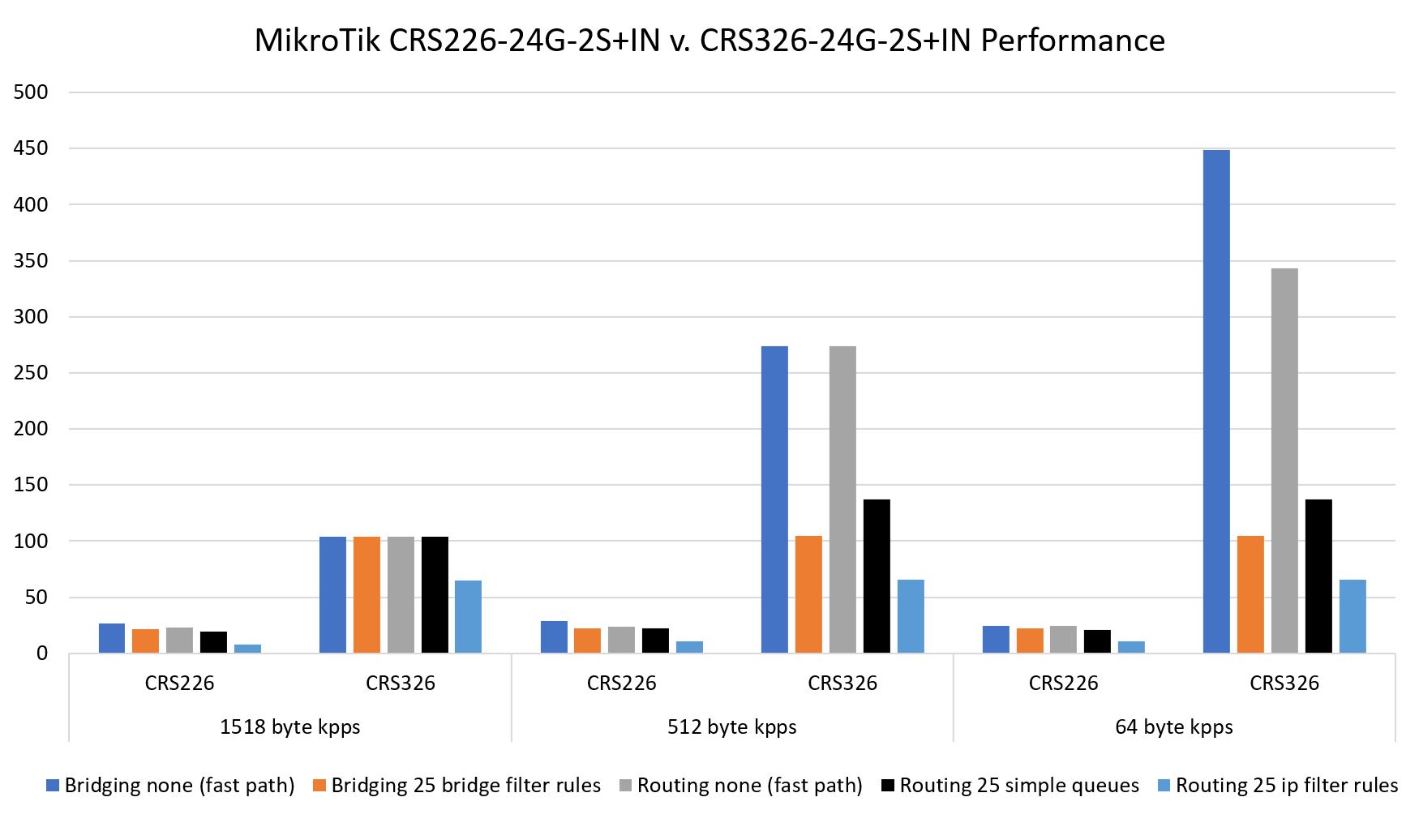
Here are the results in Mbps:
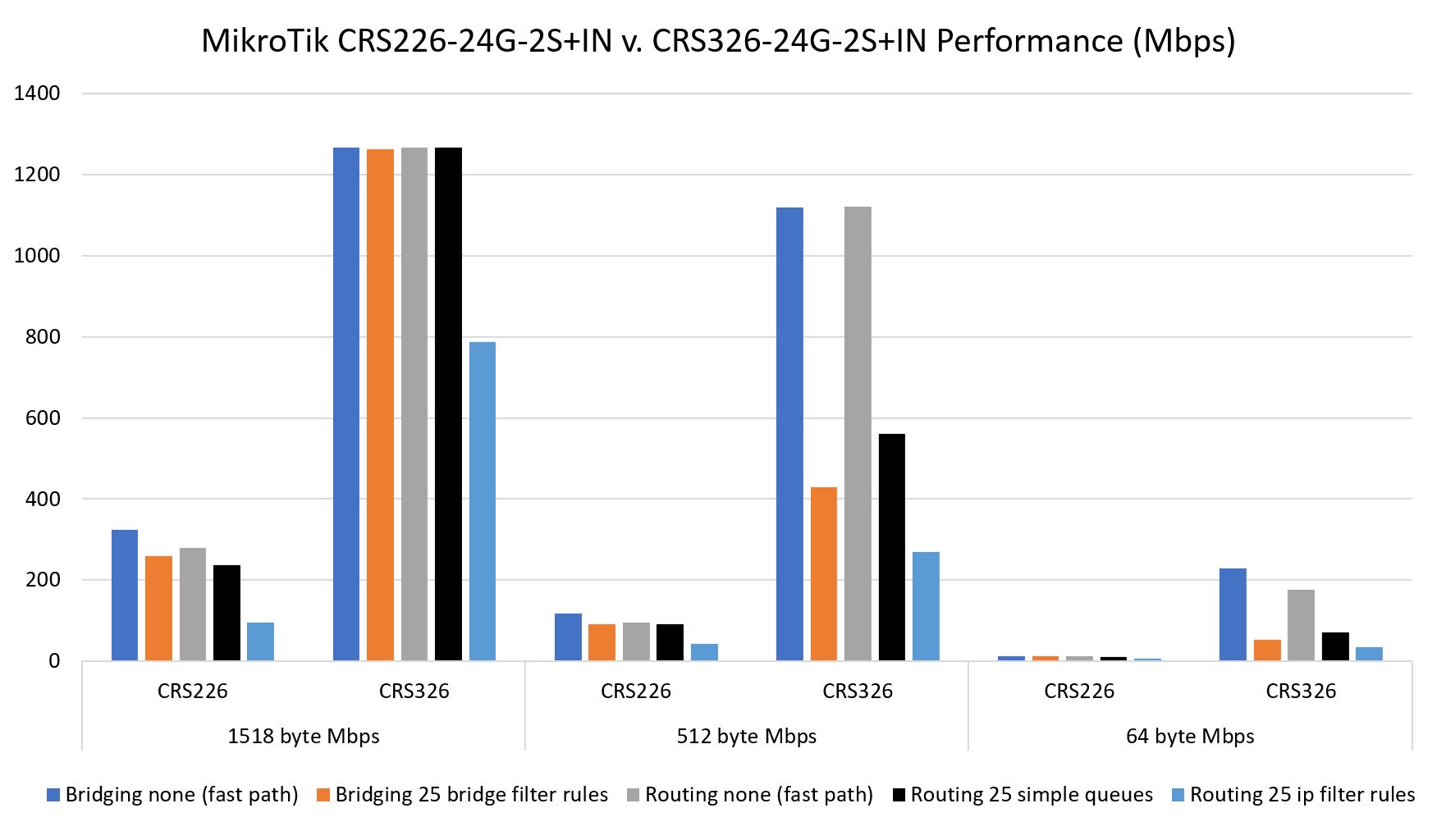
Although we generally advise that these low-end switches are best suited to basic networking functionality, the performance moving from the older Atheros MIPS solution to the newer Marvell Arm solution is drastic.
Power Consumption
We tested power consumption on 120V power since that is common at the edge where these will be deployed in North America. In terms of actual power consumption we saw:
- Idle Power: 9W
- Max Observed Power: 19W
- Max Power from Spec Sheet: 21W
Overall, the idle power consumption was surprising. We would have expected that this switch is closer to 11-12W at idle given our experience with the rackmount version. Instead, we are seeing only a 9W idle with a single port connected. Perhaps something has changed with the firmware since we reviewed the rackmount unit since we saw inside they are effectively the same switch.
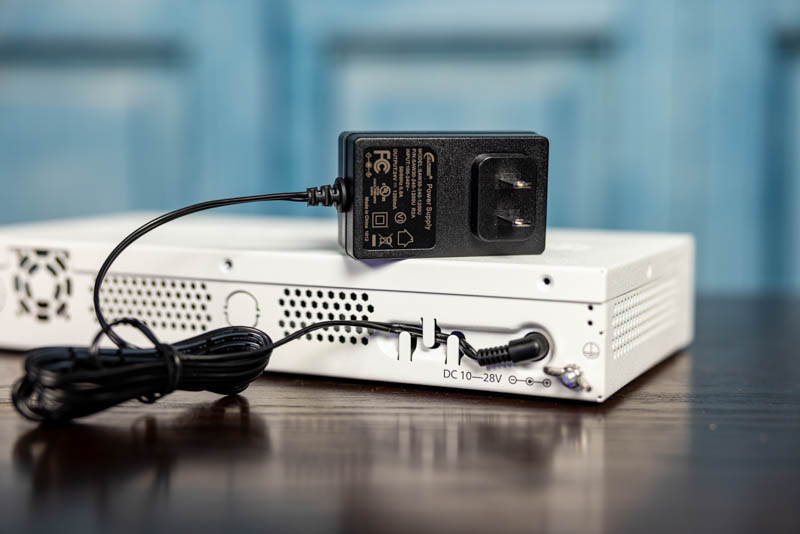
We did not get any audible noise from the switch as it is a fanless unit.
Final Words
Overall, the MikroTik CRS326-24G-2S+IN is a solid successor to the CRS226-24G-2S+IN. It is faster, and costs less, albeit without the top LCD screen. MikroTik had to make this change in order to stay competitive. Since the CRS226 launch, there are many competitors priced as such in this market. Indeed, over the six years since we reviewed the CRS226, MikroTik has launched a number of new products in the switch space so one can now say that some of its own models offer competition with different feature sets to this model. MikroTik hits a good price and feature point with this unit, but we still do not understand why MikroTik did not just include rack ears and unify the line behind this desktop unit instead of offering the MikroTik CRS326-24G-2S+RM rackmount option.
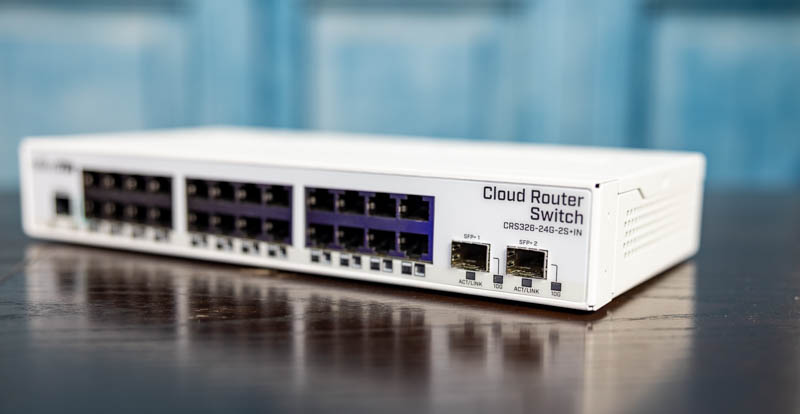
Whereas the CRS226 was revolutionary, this is evolutionary. What we would love to see from MikroTik is a 2.5GbE solution. The number of 2.5GbE devices from IoT offerings such as the ODROID-H2+ with H2 Net Card to SMB storage such as the QNAP GM-1002 3U Dual ZFS NAS, Wi-Fi 6 APs, and workstations this year are becoming more plentiful. It would be great to see MikroTik launch a disruptive 24x 2.5GbE and 2x 25GbE (or 10GbE but we can hope) switch in this space to completely change the market as it did with the CRS226. For now, the MikroTik CRS326-24G-2S+IN is designed for non-PoE out, desktop only (not rack) RouterOS deployments that need this port configuration.




The price on Amazon is currently around $120 (depending on vendor and their trustworthiness). This is so close to the price for the CRS326-24G-2S+RM ($185) as to hardly justify the reduced cost of the reviewed CRS326-24G-2S+IN unless one is looking for other specific features, such as portability/size or power usage.
I’d like to see a CRS326-24G-4S+RM (i.e., 4x SFP+) or even 6x SFP+ instead of the 2x SFP+ with the available unit. I am not inclined to the PoE version with 4x SFP+, and for home lab use 4x or more SFP+ ports would be helpful. Granted there are dedicated 4x SFP+ and 9x SFP+ units, but that drives the cost up having two units.
it’s a great solution… if you still need that many slow 1GbE ports.
what was a great lineup of low-cost 1GbE and SFP+ lineup years ago, now seems dated.
there are just a few units with QSFP and zero with nbaset or even more outlandish 10gbe…
I got really excited that they released a case painted red :D
I’m confused by the author’s claim that 10GbE has “peaked and is now in decline”. What is he referring to? Is this about a specific port or 10GbE as such? I don’t understand how 10GbE can be viewed as in decline. It hasn’t even peaked yet in homes, since it’s quite rare still. A lot of business contexts will be just now getting around to 10GbE, or the new 2.5 and 5 Gbps standards, to back Wi-Fi 6E APs and what have you.
I’m also stumped by this passage:
“The key takeaway is that there is a lot of functionality in RouterOS, but that functionality one should not necessarily expect will be hardware accelerated and thus operate at line-rate.”
Is the author saying that this functionality is not hardware accelerated, or that it is? Which functionality? And how does hardware acceleration work in this context, with these Mikrotik switches? So is there an ASIC or FPGA chip in there, in addition to the Arm core? How do they integrate it, or is it already put there by Marvel?
I’m impressed with what Mikrotik can do with hardware that I wouldn’t have expected to be powerful enough. You can power a switch like this with one obsolete Arm core? That’s amazing. I guess I don’t understand what the compute requirements are for this class of switch. They must be very low. An oldish dual core Intel Celeron built on their 22nm node would be an absolute beast compared to this single 32-bit Arm core. A low-end smartphone SoC would also be several times as powerful.
@Joe The CPU only runs the OS, essentially. The switching itself is done in hardware. This is essentially how all switches work.
I just bought RM version andit have CPU coller. Newest batches will have it.
One thing to note – I searched the article for it, but couldn’t find any mention – ff you think SSL is a must have for the management interface, this switch is not for you! Apparently they only have 64KB for their SwOS image, so it is unlikely to change soon and probably impossible for this product line. SNMP also only supports insecure v1 protocol. Only telnet, no SSH support. SNMPv1 and no SSH are OK for this price I think, but what the hell – no SSL?
I’m hoping to upgrade my home network to gear with 10g support, but even at this low price I can’t bring myself to buy something with only 2 10g ports and the rest are 1g. I think the ideal point needs to be 2.5g network (or at least a handful of ports that are 2.5?) and 4 10g SPF+ ports. That will let you connect your faster equipment (including >1g internet which is becoming more common), like a primary workstation, storage array, uplink to additional switches, and internet, to the 10g ports, and still have >1G available for the devices that need it. Otherwise with only 2 10g-capable ports, once you connect your >1g internet and storage, everything else you connect is still stuck at 1G speeds, and that just doesn’t justify the upgrade.